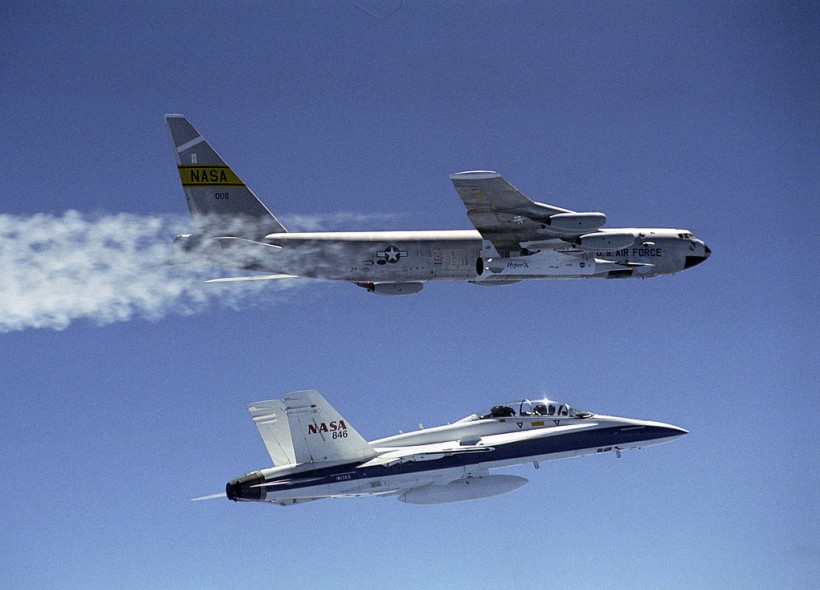Chinese researchers claim that by using an air-breathing engine that burns a mixture of ethylene and coal powder, they can significantly reduce the cost of commercial hypersonic flights, as reported first by the South China Morning Post (SCMP).

(Photo : Tom Tschida/Nasa Photo via Getty Images)
IN FLIGHT - MARCH 27: The second X-43A hypersonic research aircraft, attached to a modified Pegasus booster rocket and followed by a chase F-18, was taken to launch altitude by NASA's B-52B launch aircraft March 27, 2004 over the Pacific Ocean.
The researchers reported their findings in a paper that appeared in the peer-reviewed Acta Armamentarii journal's September 15 issue.
During a ground test, an experimental gadget using the inexpensive mixture generated shocks that were traveling at a speed of more than 2 km/s (1.24 mi/s) or six times the speed of sound.
One of the most common byproducts of oil refineries is ethylene, and coal currently makes up the largest portion of China's electricity generation, according to SCMP.
Coal Powder for Hypersonic Flights
"Coal powder's high energy density, safety, and low price give it a unique advantage when used as an engine fuel," Weng Chunsheng, lead researcher, and professor at Nanjing University of Science and Technology's national key laboratory of transient physics said in a statement with SMCP.
Weng and his colleagues are creating a detonation engine technology for China's hypersonic program, which aspires to achieve smooth, long-range flying at Mach 7, according to the university's website.
The university, which is located in Jiangsu, a province on China's east coast, was sanctioned by the US government for conducting research that has alleged military applications.
By forcing tiny coal particles into an oxygen-filled chamber and lighting them with electric sparks, the experimental coal-fired engine produces thrust through a supersonic explosion.
According to the researchers, if the initial shock occurs quickly enough, the air will be compressed and further explosions will be caused, creating a strong and continuous push forward.
The team anticipates the engine to function at least 20% more effectively than contemporary jet engines due to its extremely rapid detonations' capacity to transform more chemical energy into kinetic force.
The researchers noted that the engine will be more effective than scramjets and other conventional hypersonic engines since it will be built to operate in a variety of situations, from airport takeoff to hypersonic cruises at near-space altitudes.
Read Also: Chinese Researchers Plan to Use Triboelectric Nanogenerator to Produce Energy from Sea Waves
Testing the Coal-Ethylene Fuel Mixture
The idea of employing coal powder as an engine fuel, according to Weng and his colleagues, was inspired by mine explosions, which may instantly unleash a tremendous amount of force.
Weng's team tested the coal-ethylene fuel mixture on the ground under difficult conditions that might occur during a flight, like a low electric charge and an excess or deficiency of oxygen.
According to their published findings, the researchers discovered that the engine could start virtually always and produce incredibly quick shock waves.
The Chinese government has made significant investments in scientific research about coal mining and combustion, and the country is home to some of the biggest and most effective coal-fired power plants in the world, according to SCMP.
Weng's team also reported the development and testing of a prototype detonation engine that could run on either hydrogen or coal powder in a different study that was released in May of this year.
Related Article: China and UAE Team Up for Future Moon Rover Missions
This article is owned by Tech Times
Written by Joaquin Victor Tacla









